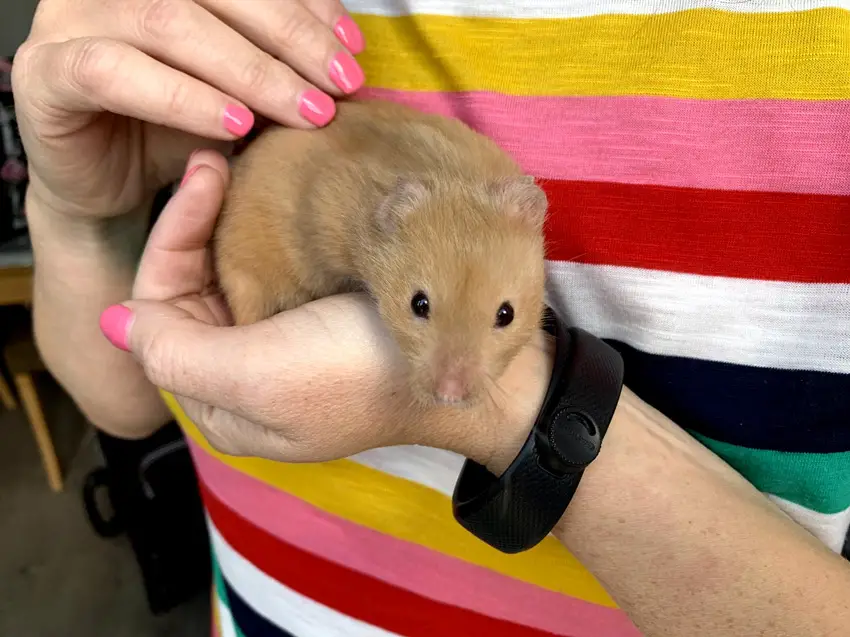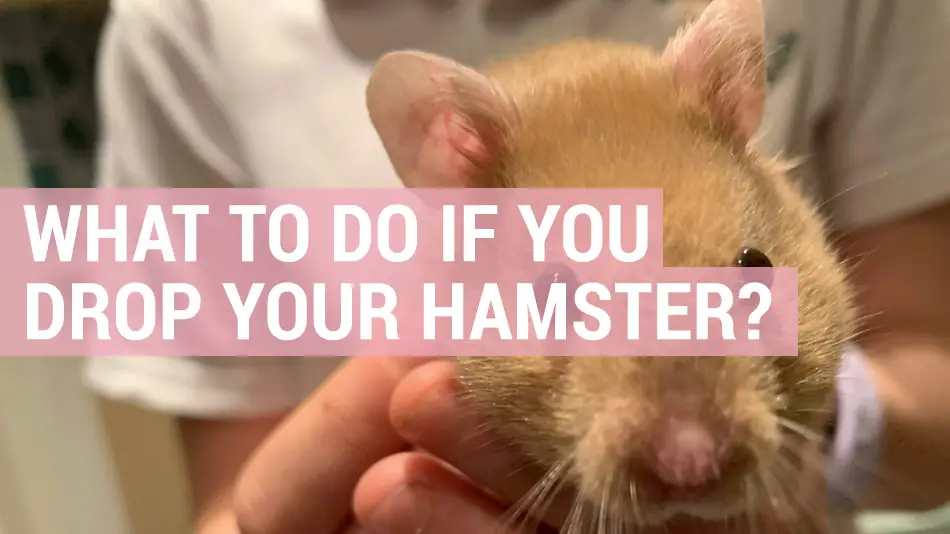Hamsters are risk-takers and so chances are that at some point, you are going to drop your hamster. This exact scenario happened to us recently when my daughter tried to hand over our pet hamster to a school friend who wasn’t confident enough to cup him gently. Upon squeezing him slightly too tight, Oscar leaped through the air and landed rather inelegantly on the wooden floor below. We were all beside ourselves with worry, however, Oscar himself has been none the worse for it ever since.
What to do if you drop your hamster depends entirely on how seriously they have been injured – if at all. You should observe your hamster closely for 24 hours and take them immediately to a vet if they start to display any signs of pain.
Hamsters – despite looking quite delicate in appearance – are actually really resilient so chances are they will scamper unscathed from a fall. Make sure they are not left unattended after being dropped and observe them for 24 hours in case they start to show signs of injury.
Below we will explain ways in which you can minimize the risk of dropping your hamster and things to watch out for after an accident.
What to do if you drop your hamster?
It happens to the best of us, but after that initial thud, you should try to resist picking your hamster up straight away. Chances are they will be in a state of shock so they will simply stand or freeze in position before trying to scamper away. Try and observe their behaviors for a few minutes, as how they react and behave will be indicative of whether they are injured or not.
If your hamster is happy to move around, then pick them up for a gentle cuddle before placing them back in their cage where they can feel safe and secure once more. Make sure that you continue to watch them for a further 24 hours, as this is when symptoms of injury or pain will become apparent.
If your hamster is displaying any signs of injury, then you should get them seen by a vet straight away.

Can hamsters survive a fall?
Hamsters are prone to falls, drops, and other mishaps but their size is often their savior as smaller things tend to hit the floor with a lower terminal velocity than items that are bigger and heavier. That said, if your hamster does get dropped accidentally from a height, there is a chance that they could suffer a serious injury.
It is not unusual for a hamster to fall through your fingers or even leap from your hands. Most of the time, however, they manage to land upright on their feet and are absolutely fine. But there are times when they can take a serious tumble, land awkwardly, on their backs and even bang or settle on sharp objects.
Sometimes a high enough drop can fatally injure a hamster. For these reasons, we should be especially careful when carrying our hamsters in order to protect them.
How do I know if my hamster is in pain?
If your hamster has broken a part of their body, are bleeding or are showing obvious signs that they are in pain, then and you should take them immediately to the vets.
Do keep an eye on your hamster following a fall, because although they may outwardly look fine, they might suddenly start to display some other noticeable symptoms that all is not well. These include:
- A lack of appetite
- Appearance of swelling
- Limping
- Labored breathing
- Sudden aggression when being touched and moving around
- Squeaking or cries of pain
- Sleeping more than usual
Can hamsters jump and from how high?
Hamsters are climbers and like all good mountaineers, they tend to assess the risks beforehand. When it comes to jumping, however, they tend to use the theory of “fight or flight” and will leap in order to escape an unsafe situation.
Some dwarf hamsters will try and jump whilst in their cage and do this in order to propel themselves forward. This is why you should make sure you have a deep cage or ideally a lid so that they are unable to escape.
Unfortunately, hamsters have very poor eyesight and are unable to judge heights or distances well. Therefore, the smaller the drop the better the recovery as they can see and estimate their landing in advance.
Often a hamster that is about to jump, it will give off subtle warnings such as starting to speed up movement whilst in your hands, moving their head from side to side and erratically twitching their whiskers. If you notice this hamster behavior it is best to place them back in their cage straight away to prevent an accident from occurring.
Conclusion
Hamsters are small, adorable creatures but they are also quick and fearless. If you are not confident about handling your hamster, then we would suggest sitting close to the floor over a soft-landing area in case the worst scenario should happen. As you build up your confidence, your hamster will be familiar with being handled and be less inclined to squirm around or jump.
Remember to try and cup your hamster, rather than hold it around the middle as this can scare and alarm them, causing them to leap in fright. And finally, if your hamster does take a tumble, don’t panic. Simply assess the situation for a few minutes giving your hamster time to recover before observing him back in his cage for a further 24 hours.
We are pleased to report that following Oscar’s mini flying experience he is now happy to be on safer ground and is continuing with hamster business as usual.


